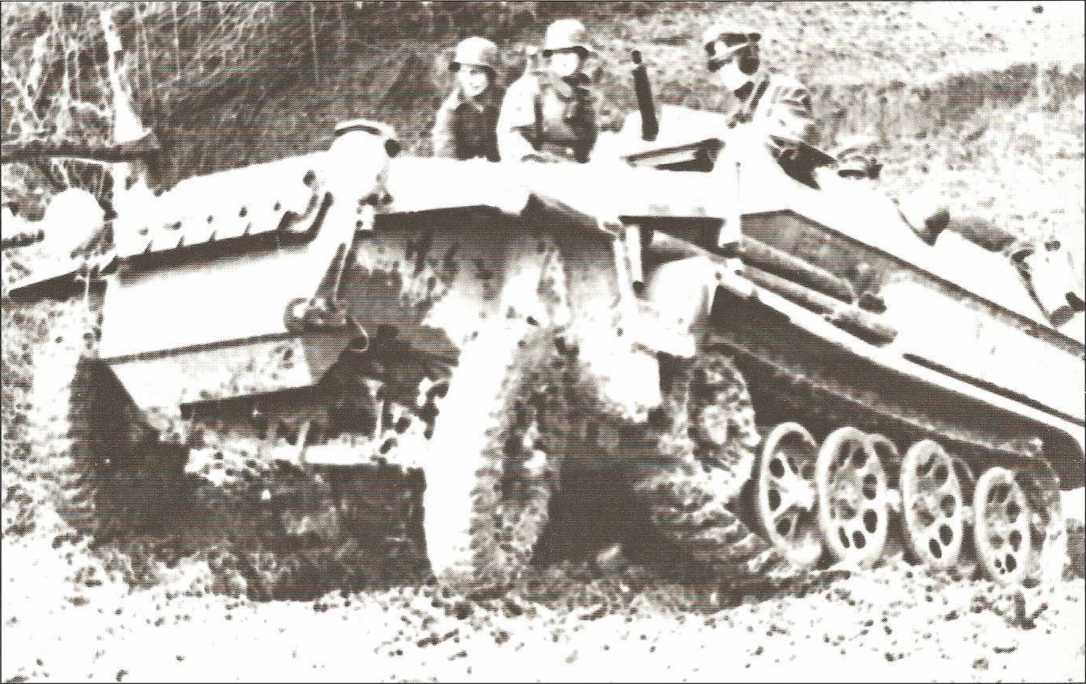During the German Army’s first combat use of these medium APCs - the successful September 1939 invasion of Poland - Sd Kfz 251 vehicles were used merely to transport a section of infantrymen to the edge of the battlefield, where they disembarked to join an engagement before reembarking after the battle. However, during the Germans’ May-June 1940 invasion of France and the Low Countries, half-tracked APCs - with their infantry still embarked - often entered action alongside the panzers, providing useful fire support with the vehicle’s machine guns and the infantry’s small arms. These vehicles often screened the flanks of the advancing panzer divisions, and even disembarked their infantry in the middle of the battlefield to mop up scattered pockets of dispirited and confused enemy soldiers. During this campaign, given that the poorly-prepared Western Allies could not cope with the high tempo and momentum of German mechanised operations, such tactical use of the Sd Kfz 251 did not turn out to be expensive in terms of casualties.
Given these useful tactical services provided by German APCs in France, during the June 1941 German invasion of the Soviet Union, Operation Barbarossa, the Wehrmacht used these APCs as front-line combat vehicles within the panzer divisions. However, when used in this role during the bitter battles that raged on the Eastern Front during 1941-42, the lack of firepower and - especially - the poor
Below: A view of an Sd Kfz 251/1 moving through Russian mud, demonstrating the type’s manoeuvrability over difficult terrain. Without such vehicles, the panzergrenadiers lacked the mobility that made them such a potent strike force.

Level of armour protection possessed by the Sd Kfz 251 became painfully clear. Consequently, the panzergrenadiers experienced rapidly rising casualty rates in combat. Unfortunately, the design offered little scope for increasing the levels of protection afforded to the panzergrenadiers, and this would affect German employment of the mSPW in such a front-line role for the rest of the war: consequently, loss rates of these vehicles remained as high during the last three years of the war as they had been during the Operation Barbarossa campaign.
Despite German attempts to up-gun the Sd Kfz 251, the battles fought during 1943 demonstrated clearly that the lightly armoured mSPW remained far too vulnerable to enemy fire to be used in the midst of battle. However, the growing menace posed by infantry anti-tank weapons like the bazooka compelled the Germans to continue employing the Sd Kfz 251 in the van of the battle. By 1944, these yPCs often even pushed forward in front of the armour to neutralise enemy tank destruction squads, by using their machine guns.
By 1945, with the steadily weakening German Army relying on static defences to a greater degree in the face of the inexorable Allied advance, German APC tactics again altered. Reverting to the 1939 model, APCs tended to transport their infantry section to the edge of the battlefield, to man static defences, before the heaw weapons APCs withdrew to provide fire support with their cannon from the rear. The Sd Kfz 251 vehicles lacking cannon would be deployed with small groups of tanks as mobile counterattack forces.




 World History
World History









